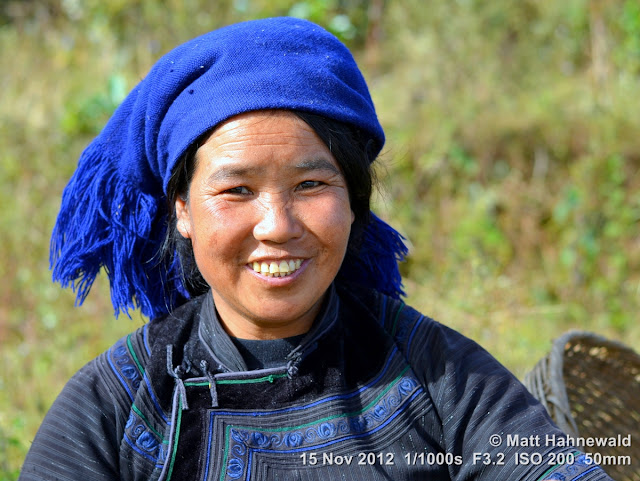China's
Yunnan Province is noted for
a high level of ethnic diversity. It has the second highest number of
ethnic groups among the provinces and autonomous regions in China. Among the country's 56 officially recognised ethnic groups, twenty-five
are found in Yunnan. According to Wikipedia, some 38 % of the province's
population are members of minorities, including the Yi, Bai, Hani, Tai, Dai, Miao, Lisu, Hui, Lahu, Va, Nakhi,
Yao, Tibetan,
Jingpo,
Blang,
Pumi,
Nu, Achang,
Jinuo,
Khatso,
Derung, Manchu,
Sui,
and Buyei.
27 November 2012
Mapping Southeast China's Minorities
The photographs above have been taken in
China
11 November 2012
Meeting the Vietnamese H'mong
The H'mong
are an ethnic group from the mountainous regions of China, Vietnam, Laos, and Thailand; they are also one of the sub-groups of the Miao ethnicity in southern
China.
Bắc Hà is a rural district of the Lào Cai Province in the Northeast region of Vietnam and the "capital" of the Vietnamese Flower H'mong, one of the more than 50 minorities of Vietnam and of the six main groups of the H'mong people.
Bắc Hà town is famous for its Sunday morning market, where thousands of locals
gather, the older women dressed in their handmade, very intricate and colourful traditional costumes
(it takes three to five months to embroider one by hand) and the younger women in their tribal costumes manufactured in China. Another large Flower H'mong market is the Saturday morning market at Can Cau aka Can Cao, c. 20 km
north of Bắc Hà.
Many H'mong practice shamanism and ancestor worship.
Like other animists, they also believe that all things are endowed with
spiritual beings and so should be respected. Significant numbers of the Vietnamese H'mong
who seek to worship independently of the regime of the Socialist Republic of
Vietnam have reportedly been subjected to military attacks, police arrest, imprisonment,
extrajudicial killings, and torture.
During the Indochina Wars, the United States recruited thousands of H'mong people to fight against forces from north and south Vietnam, known as the Secret War, during the Vietnam War.
Hundreds of thousands of H'mong refugees fled to Thailand seeking
political asylum. Thousands of these refugees have resettled in Western
countries since the late 1970s, mostly the United States, Australia and Canada.
High-res portrait photographs with complete exif data, geotags and other specs in Matt Hahnewald's
Flickr Album 2018-03d Motorbiking in Northeast Vietnam
The photographs above have been taken in
Vietnam
02 November 2012
Facing Downtown Hanoi
As
the capital of Vietnam for
almost a thousand years, Hanoi
is considered one of the main cultural centres of Vietnam, where most
Vietnamese dynasties have left their imprint. It is a very picturesque city,
the leafy metropolis sometimes dubbed the "Paris of the East", one of
only a few Asian capitals to retain its historic charm amid rapid modernisation
and population growth. Hanoi is a city full of photographic opportunities and
most people like to be photographed…
The áo dài is the stylish Vietnamese national costume, now most commonly worn by women. In its current form, it is a tight-fitting silk tunic worn over pants.
The word áo dài was originally applied to the outfit worn at the court of the Nguyễn Lords at Huế in the 18th century. This outfit evolved into the áo ngũ thân, a five-paneled aristocratic gown worn in the 19th and early 20th centuries. Inspired by Paris fashions, Nguyễn Cát Tường redesigned the ngũ thân as a modern dress in the 1920s and 1930s. The updated look was promoted as a national costume for the modern era. In the 1950s, Saigon designers tightened the fit to produce the version worn by Vietnamese women today.
High-res portrait photographs with complete exif data, geotags and technical details in Matt Hahnewald's
Flickr Album 2018-03b Cherishing Vietnam's Beauty
Flickr Album 2016-03a Snapping Street Photographers
The photographs above have been taken in
Vietnam
Subscribe to:
Comments (Atom)



































